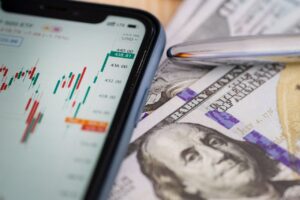
Why Are Energy Prices Going Up?
Last September, a month or so before European weather grew cold, the natural gas in storage facilities did not seem enough to deal with winter demand. In fact, it hadn’t been that low for that time of year in ten years. Economies all over the world were re-opening after pandemic constrictions and demand for energy was up, but supply was slow in coming. Norway, the second biggest gas supplier for the continent, was engaged in maintenance work, which held back their supply. The biggest exporter of natural gas, Russia, was “Coming off an extended period of inexplicably low supply”, said Amos Hochstein of the US State Department.
The cost of electricity was rising to levels that caused consumers real difficulties, and the wind was not blowing vigorously enough in Europe for wind power to lend a hand. Goldman Sachs said that if supply stayed low and winter grew very cold, “European gas and power prices may have to rise further to ration demand and thus curb energy-intensive industrial production”. By September, benchmark gas prices on the continent had jumped up by a massive 300%, and the European Council met near the end of October to discuss the problem. For all those engaged in CFD commodity trading, let’s look a bit more closely at the hike that’s been affecting, not only natural gas prices, but also the prices of crude oil, and then try our best to look ahead.
Germany and USA
In March of this year, power in Europe was the most expensive it has ever been. At the month’s end, in anticipation of Russia potentially cutting off gas supplies due to their demand to be paid in roubles, Germany was making plans to ration its gas supplies, with industry to feel the pinch first. Half of the homes in Germany heat their homes with natural gas, and Economy Minister Robert Habeck said the country might only reach its goal of being independent of Russian supplies in the middle of 2024. Germany faces the possibility of a recession even without the issue of gas shortages, because the high costs of energy have already forced German industry (in particular, steel and chemical factories) to hold back production.
In the USA, gas prices are mostly independent of prices elsewhere, but the US has been exporting LNG (liquefied natural gas) to Asia and Europe, so connections are being made across the Atlantic. Even though winter demand in the US was moderate and prices were high, stored gas was running low at the start of April, due the high overseas demand. US gas prices were their highest in over ten years. European demand for LNG is set to be strong, which is why the number of gas rigs in the US had increased by 32 since January.
Russian Gas and Oil
By the end of the first week of April, the EU had not placed sanctions on Russian gas or oil, with countries like Germany opposing such a move. As a result, Russia found a way to nourish its economy in the midst of the other sanctions it was facing. “Gas flows from Russia to Europe have, if anything, increased since the invasion”, reported Bloomberg. Sokol crude oil from Russia had all been bought up for the next month. It was expected that Russia would earn $320 billion from gas and oil exports in 2022, and the rouble was back on track at its pre-invasion levels. On the other hand, the April discoveries of Russian war atrocities may inspire countries to embargo Russian energy even despite the threat to their own economic well-being, suggested the Institute of International Finance.
Down the Road
One potential solution to the search for power is nuclear power, which South Korean president-elect Yoon Suk-yeol wants to build up for the future, even though his predecessor was in the process of closing down the 24 nuclear reactors in the country. Yoon said he plans to “Advance safe nuclear technologies so that they can become a core engine to drive the country”, and is expected to restart construction on the Shin-Hanul-3 and 4 nuclear plants, which had been halted.
Europe’s renewable energy sources were unable to keep up supply in 2021, with wind speeds low all year. More broadly, global efforts to shift to renewable energy have threatened to push up the prices of power. “The structural shift away from coal and nuclear towards wind and solar is also causing severe strains in the power system”, explains Trafigura Group. In the meantime, while European nations seek out the most sustainable energy solutions available to them, consumers will be struggling to keep up with surging power prices. Those involved in CFD commodity trading ought to be keeping a close eye on new Russian sanctions that may be coming in the next few weeks, which could affect the commodity trading prices of natural gas, crude oil, and many others.




